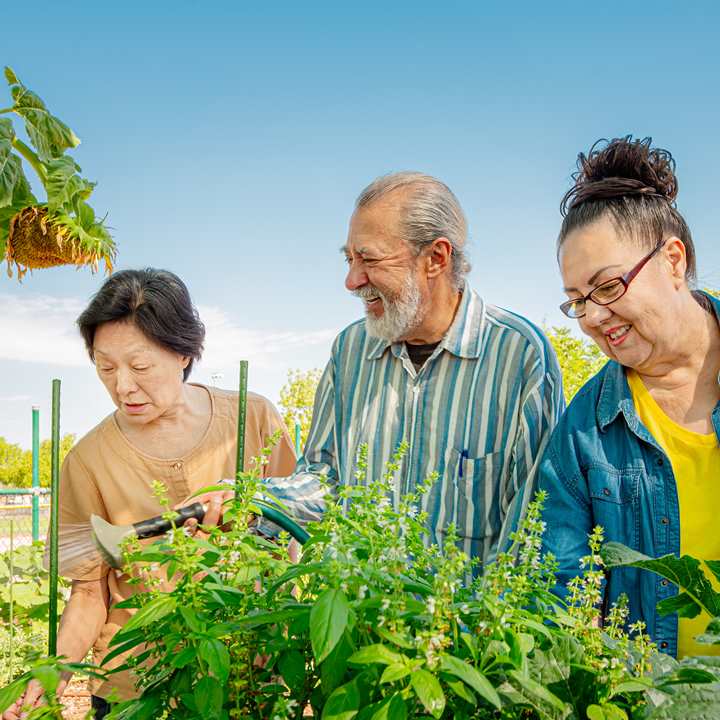Top tips for growing at home
You don't need a large space or a big budget to grow delicious produce! It's all about working with what you've got. Here's how:
1. Don’t try and grow everything
Grow what you like to eat. Focus on foods that are unavailable or expensive in shops or taste better fresh.
2. Children are more likely to eat something they’ve chosen to grow
Get the kids involved when choosing seeds and they'll be even more excited to taste the produce.
3. Start small
You can always expand as you gain experience and confidence. Little and often lightens the workload and keeps you on top of everything. It’s about enjoyment and fun, not becoming a slave to your veg! Micro-greens such as cress, spinach, beetroot and rocket are a great place to start.
4. Go Potty
There’s no need to buy fancy pots and containers, get creative and reuse what you’ve got. Use biodegradable loo rolls, egg boxes or your own hand-made paper pots to plant in pots or the garden once seeds have germinated. Clean tin cans (be careful about sharp edges), coffee jars, tea cups, plastic bottles and veg containers. Go big and repurpose buckets, storage tubs or even old furniture drawers. Fill with peat free compost and don’t forget to put a draining hole in the bottom!
5. Soak larger seeds overnight
You’ll find they germinate more quickly.
6. Make your own lightbox
Gardening in low light conditions? No problem! Find out how to make a lightbox from household bits and bobs.
7. Make supermarket herbs go further
You can do this by splitting them or taking cuttings. Use these easy to follow instructions for taking cuttings.
8. Use dried marrowfat peas
These are actually seeds that can planted! Check out our guide to peashootsfor all ages.
9. Regrow from food waste
Before food scraps hit the compost bin take a look at what you could regrow. Celery, carrots, parsnips, beetroot and onions can sprout new tasty leaves, shoots and seeds, even lettuce can take root and come again. Sprouted potatoes will grow but it is not recommended to plant them as diseases can carry over from the previous year, which is why it is important to use certified disease-free seed potatoes (certified by DEFRA), rather than supermarket ones.
10. Go foraging
Use your daily exercise to pick some wild garlic, or make your own liquid feed from nettles or comfrey. Beware, it can be smelly – but you don’t need to spend a thing.
Happy gardening! Let us know how you get on by tagging us on Facebook or Twitter @SAFoodforLife. Don’t forget to use #FFLGetTogethers.


